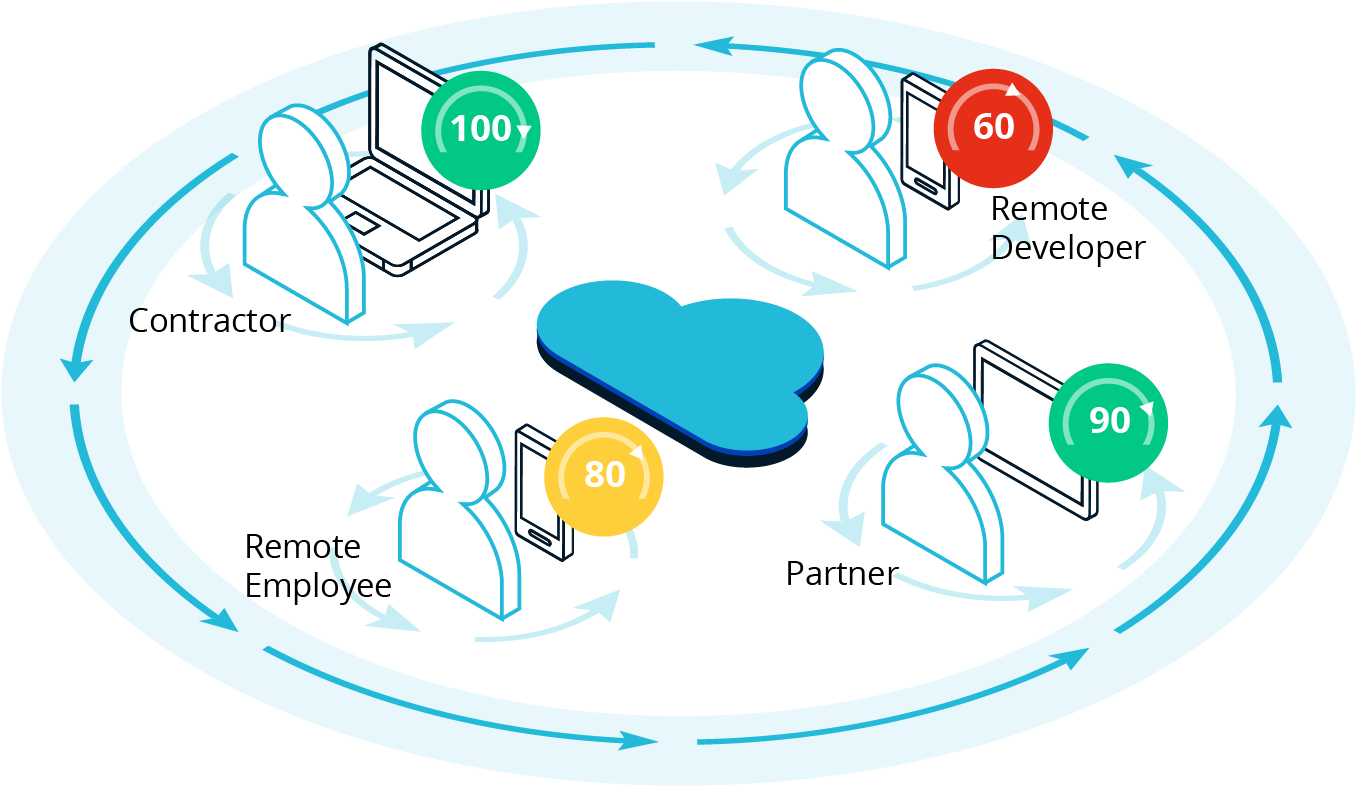What is ZTNA?
Your Easy Guide to Zero Trust Network Access

Banyan’s Zero Trust Network Access (ZTNA) solution is a next-gen security and networking concept that provides secure remote access to an organization’s applications, data, and services based on clearly-defined access control policies. ZTNA offers better security, manageability, and performance than legacy virtual private networks, or VPNs. Get all the answers about Zero Trust Network Access here.
What is Zero Trust Network Access?

What challenges does ZTNA help solve?
First off, Zero Trust Network Access (ZTNA) allows authorized employees and third parties to access hybrid and multi-cloud applications and infrastructure from anywhere without needing to use legacy VPNs. Second, it’s built for a post-Covid world, allowing easy, granular access to your entire IT ecosystem (on-premises, hybrid, and multi-cloud), for both your on-campus and remote workforce. Third, ZTNA is perfect for organizations looking to employ and accelerate a path to a Zero Trust model, which is a belief that companies should not automatically trust anyone or anything that’s attempting to gain access to its applications, resources, and infrastructure before granting permission to access.
How does Zero Trust Network Access work?
1. Users connect to their corporate applications and resources via Banyan’s globally distributed high-performance edge network.
2. Deployed on-premises or within a cloud environment a Banyan Connector “dials” out to create a secure portal with our Banyan Global Edge Network – no inbound firewall rules or complex DMZ architectures needed.
3. Administrators use a SaaS management interface to publish private applications and services for their end users. Access policies are written in human-readable syntax based on user identity and device trust – and integrated with corporate identity and device security tools.
4. Users get one-click access to their private resources via their browser and the Banyan app, which allows users to register their devices and view their customized catalog of corporate resources.
What is Zero Trust Network Architecture?
As more organizations do more computing outside traditional perimeters, security teams have found that they can no longer implicitly trust or identify who and what should be allowed access to their networks. In most companies, users are granted privileges to infrastructure and data just once and security teams have limited visibility into what the user or device is doing. As inferred by our name, a Zero Trust Network implicitly trusts no one – everyone from owners and CEOs to third-party developers and even other servers are considered potential threats.
Zero trust network architecture is Banyan’s patented IT framework that transparently deploys in hybrid and multi-cloud environments. Built for both on-campus and remote workforce, it continuously enforces trust-based access policies based on any combination of user, device, and application contexts while leveraging existing enterprise identity and security tool investments that are already in-place at your company. Plus, it allows you to efficiently add, remove, and manage users, user devices and application access in real-time with ease.
How can you implement ZTNA?
Banyan’s Zero Trust Network Access solution can be implemented with relative ease, using non-disruptive incremental deployment. You can see this for yourself. We offer a free (no cost, no credit card required) Team Edition of the product that gets most folks up and running in 15 minutes or less – delivering an end-user experience that is superior to other forms of remote access.
The great thing about our Zero Trust Network Access is that there’s no need to rip and replace the infrastructure you already have in place. ZTNA can be deployed alongside your existing infrastructure and security tools – offering an incremental “deploy-as-you-go” model for admins and users that includes co-existence with VPNs, one app or service at a time, permissive mode (learning) vs. enforcing, and more. ZTNA also seamlessly integrates with existing MDM/UEM, IDP, and EDR investments.
How do you set up a Zero Trust Network?
And best of all, Banyan ZTNA is designed for incremental rollout in any environment, integrating with existing EDR, MDM/UEM, and SIEM solutions. You can even deploy it alongside your existing legacy VPN as you evolve your network infrastructure. To set up a Zero Trust Network:
Speak with Our Zero Trust Experts about your Security Initiatives ⇢
How does ZTNA differ from traditional network security perimeters?
By design, perimeter security establishes a perimeter, or border, to protect an organization’s data. Since COVID, more and more users are working outside of that border. Zero Trust Network Access (ZTNA) provides a way to provide workers secure access to applications and resources, regardless of the worker’s location (on-campus or remote). Moreover, this model was acceptable when every application was on-premises, which is no longer the case. All organizations are now hybrid with data and applications living on-premises, in cloud service providers (CSPs), and within SaaS applications.
In this post-Covid world, everything has changed in how and where we work. Employees are literally working all over the place – from homes and coffee shops to airports and everything in between. Yesterday’s security perimeters, such as VPNs, were less expensive to implement when a minority population used it occasionally. But now that the majority of workers are accessing resources via a legacy VPN, they have proven to be expensive, difficult to manage, and present a number of security and performance liabilities.
Banyan’s Zero Trust Network Access solution assumes that everyone who has access to your company’s server could be a threat to your files, data, and other important company info – even finances. In a zero trust environment, the principle of least privilege is applied, giving workers access to exactly what they need to do their job, unlike legacy VPNs that grant overly-broad access to entire networks. By limiting lateral movement, you can now safely provide secure access to contractors, partners, and other third parties who tend to use non-managed devices. In addition to least privilege access, continuous authorization constantly re-verifies that the user’s credentials are valid, that they are accessing from a known device, and that the device’s security posture passes muster. Access can be revoked mid-session if warranted.
How is ZTNA different from legacy VPN?
As many companies are moving to a more remote or hybrid workstyle, they must enable secure remote access across their on-premises and cloud deployments. Network-centric solutions like traditional VPNs (Virtual Private Networks) are not designed to meet modern organizations’ scale, performance, and usability needs – especially with complex hybrid cloud environments.
Legacy VPNs create a huge security liability as they offer broad access to sensitive corporate networks and permit the kind of lateral movement that hackers use for cyber attacks like malware, ransomware, and other illegal activity. And although VPN vendors have begun to roll-out “next generation” technology as a stopgap, many organizations are moving away from these legacy VPNs toward strategies and frameworks that provide better and more consistent security.
As opposed to inflexible VPNs which are complex to deploy and provide poor security, Banyan’s comprehensive Zero Trust Network Access solution scales to your hybrid and multi-cloud demands. Banyan’s ZTNA provides as VPN alternative that’s designed to give you the highest security protection around.
